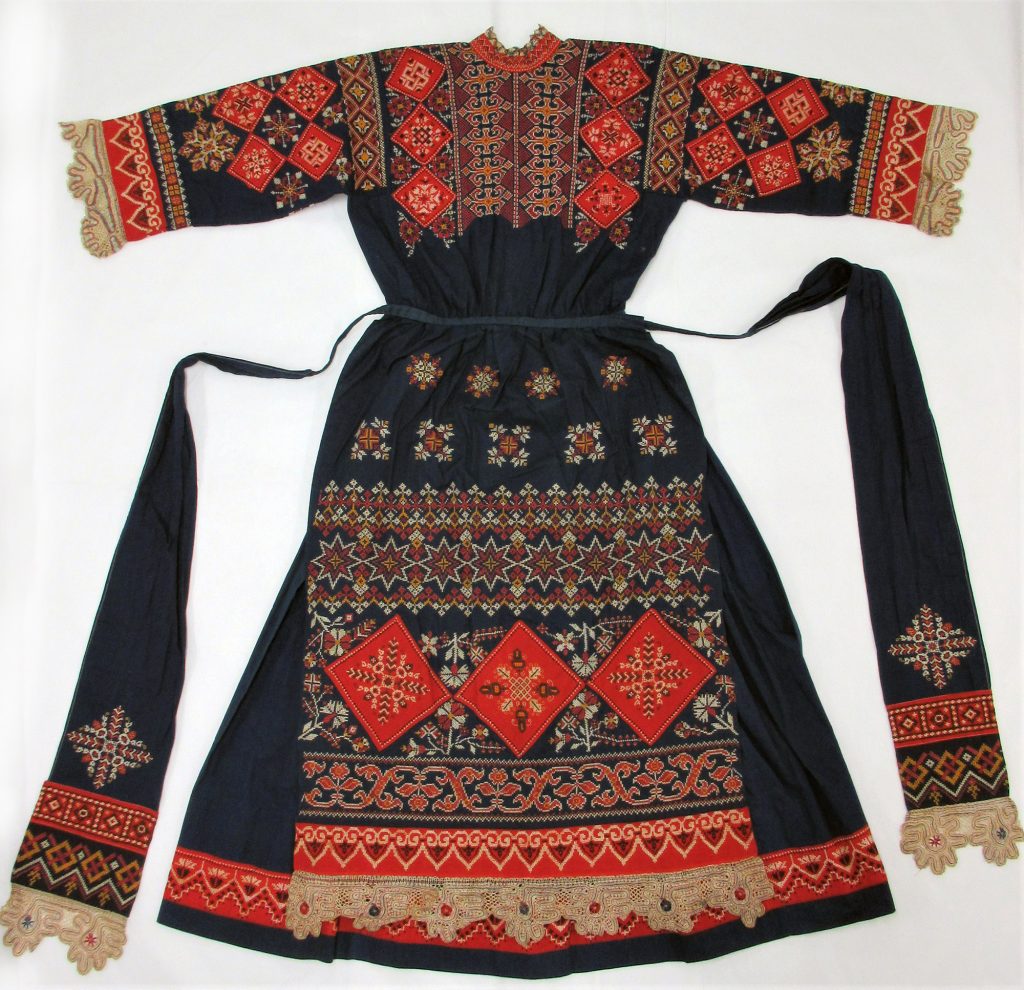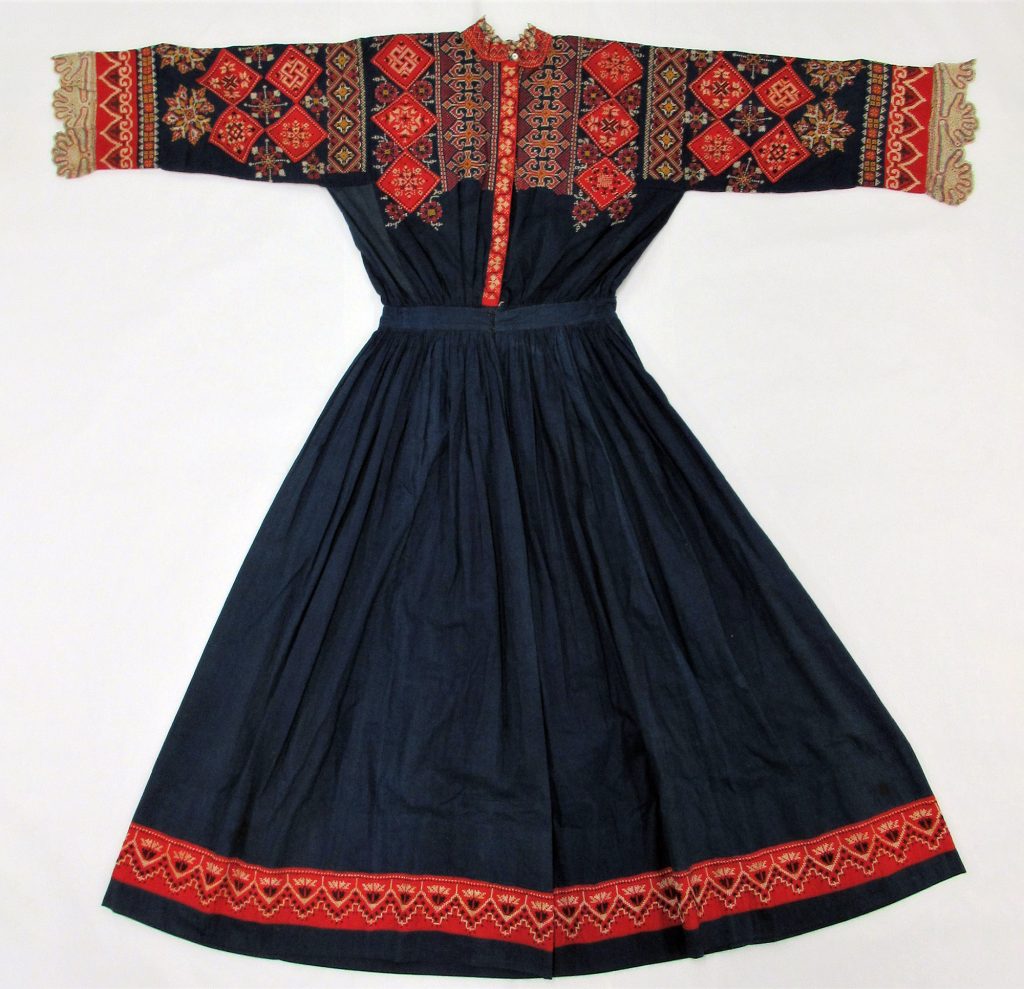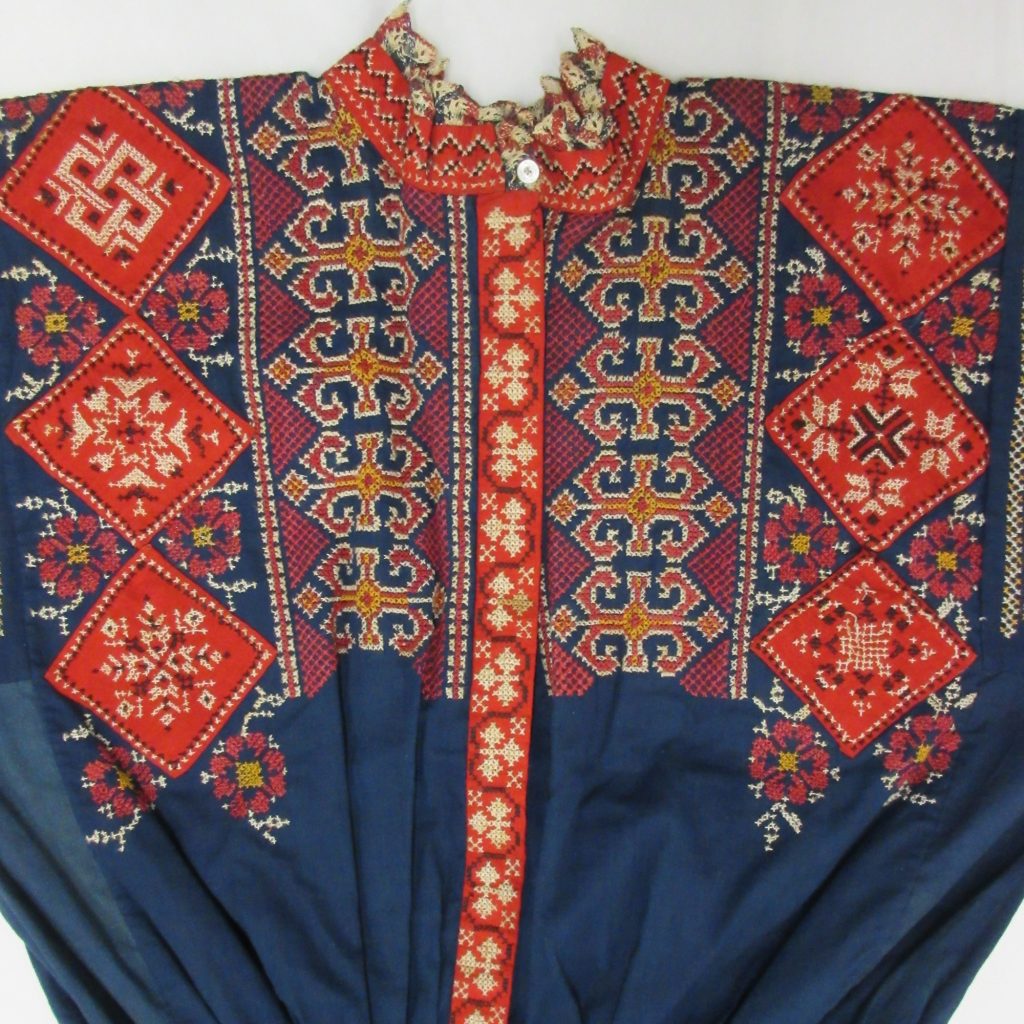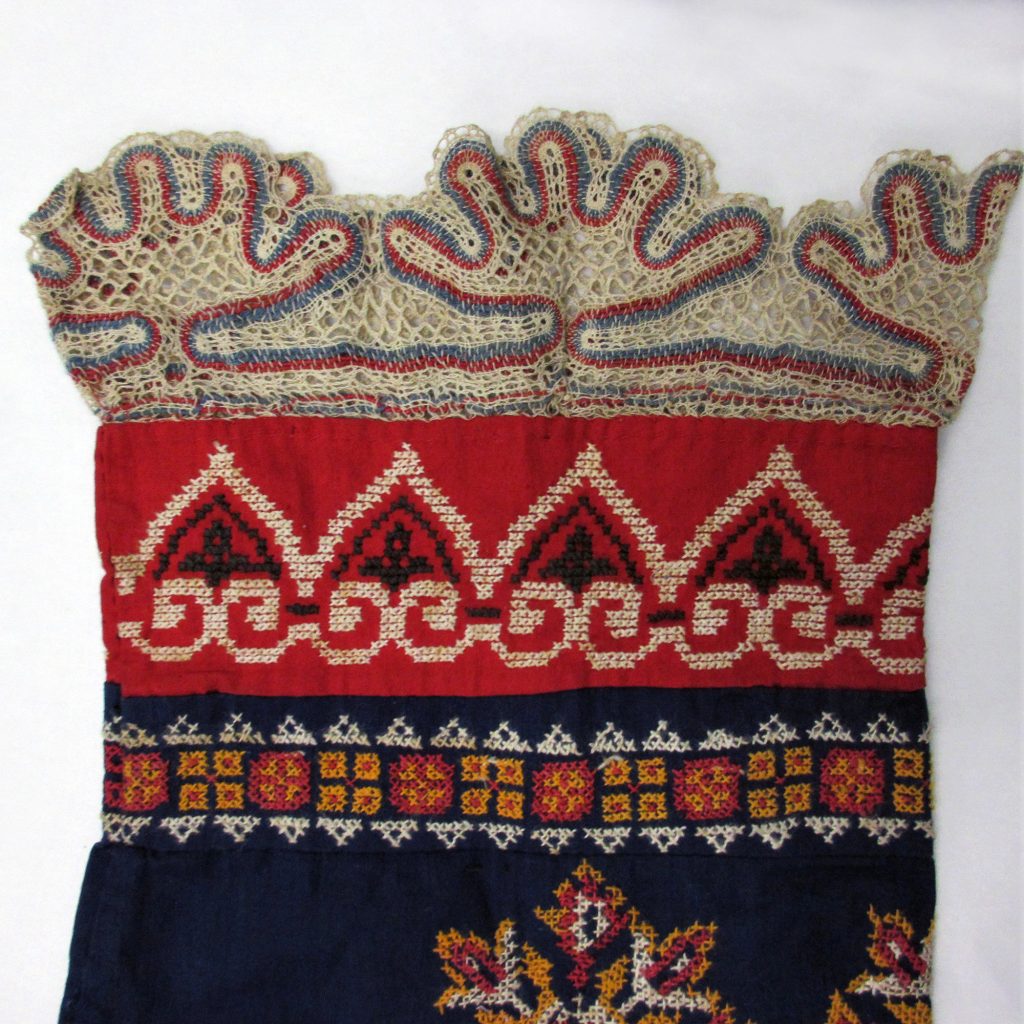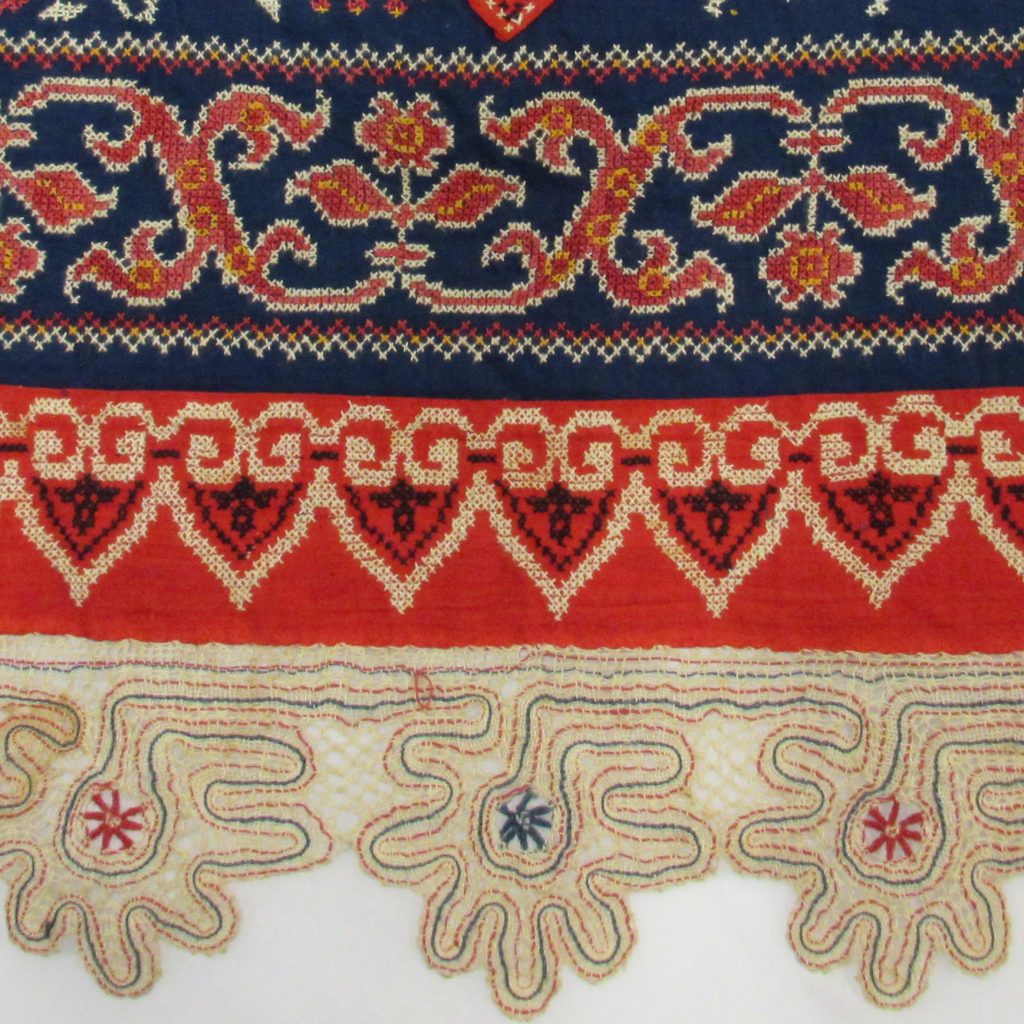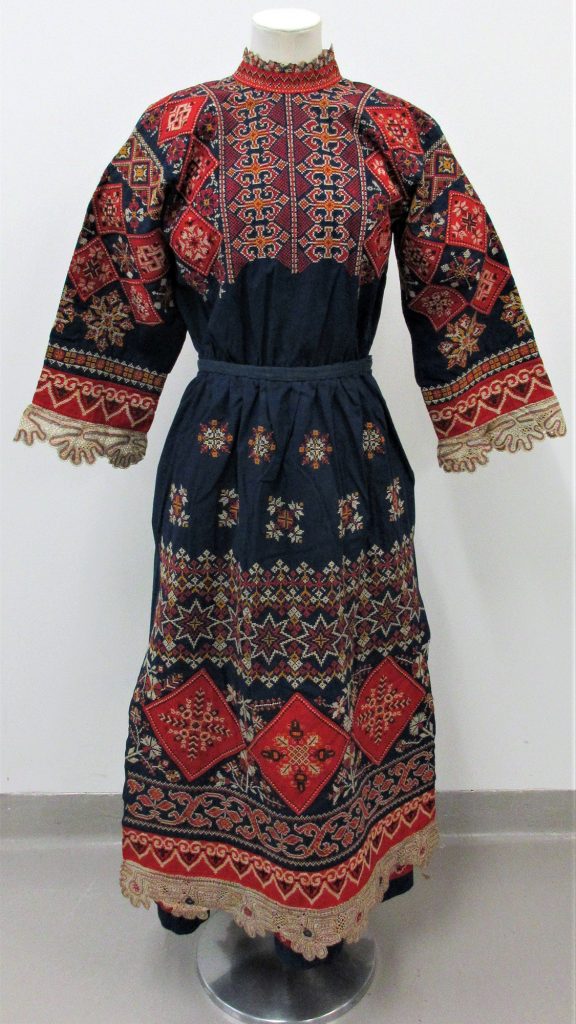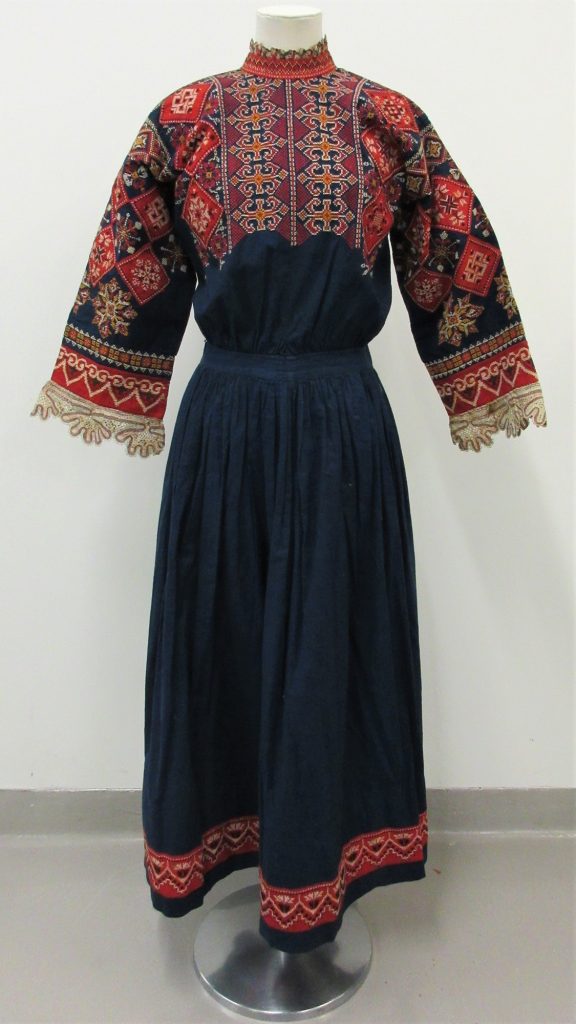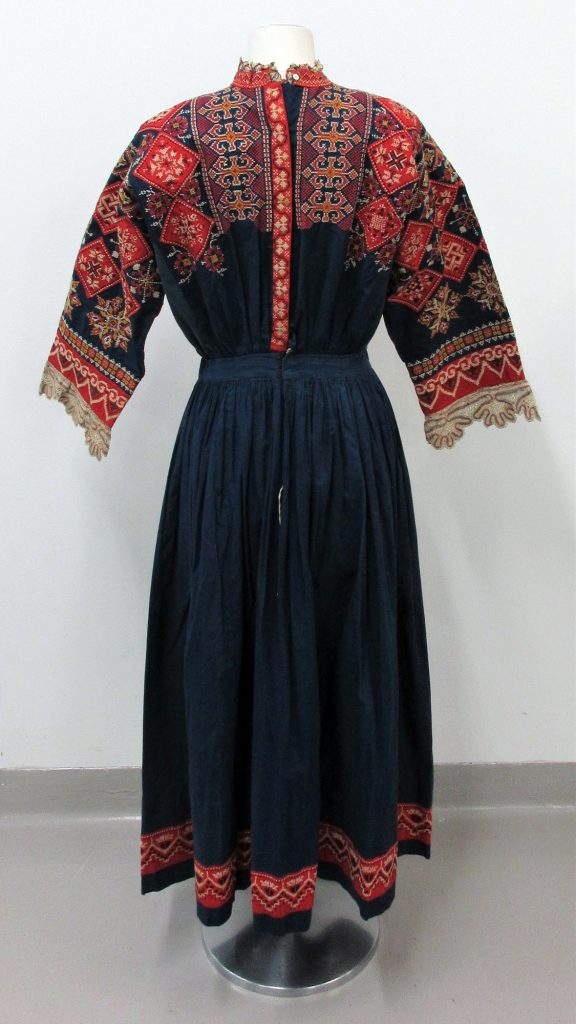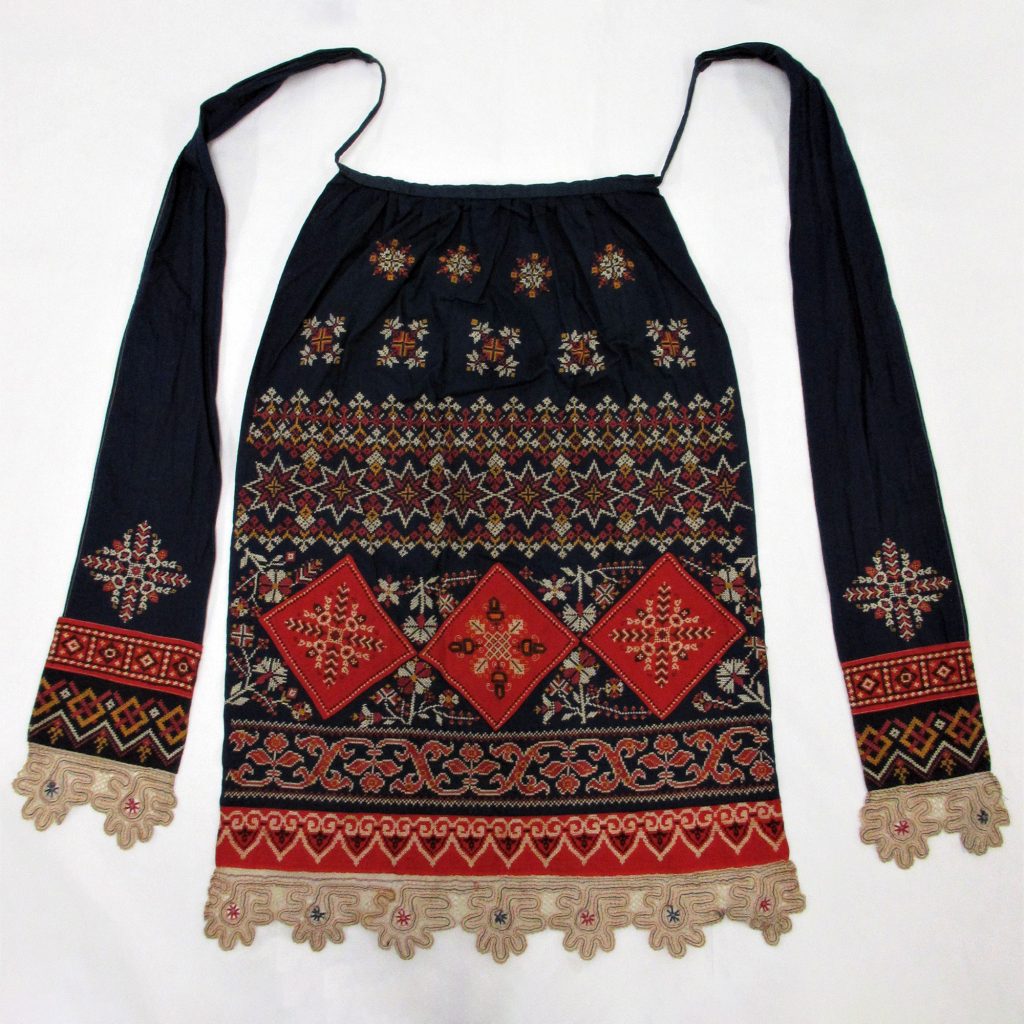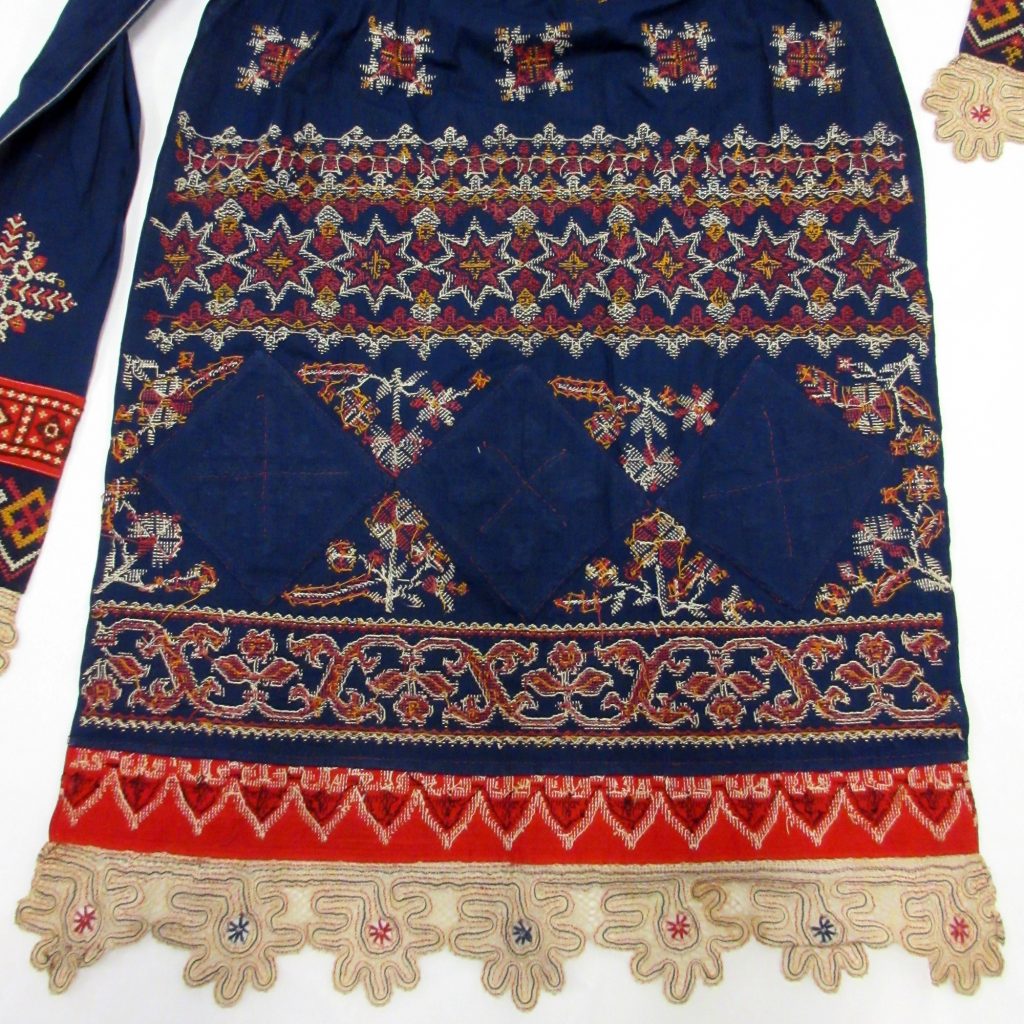Alongside the human cost of conflict, the nihilistic destruction of centuries of historic heritage in Ukraine has provoked alarm, outrage and offers of support across the international museum sector. At the outset of hostilities, we looked to provide practical support where we could. For example, in the supply of wooden pallets and packing cases. Director Chris Breward reflects on his own connections to Ukraine and follows the thread of one of our Ukrainian textiles.
During this year’s Edinburgh International Festival, I was honoured to attend a rare performance of the Ukrainian Freedom Orchestra at Edinburgh’s Usher Hall. Under the baton of conductor Keri-Lynn Wilson, these professional musicians drawn from Ukrainian expatriate and refugee communities and those who have been able to take precious time out from the situation in Ukraine, have come together to draw attention to their country’s struggle through performing a tour of performances in the cultural capitals of Europe. The passionately played programme of pieces by Valentin Silvestrov, Chopin, Verdi and Dvorak was a moving reminder of the fragility and power of culture in times of war.
I was reminded of happier times when I had travelled to Kyiv for a conference on fashion history and collaborated on a touring British Council exhibition on dandyism (which, perhaps in a sign of things to come, had been forced to close prematurely due to the uncertainties around Ukraine’s ‘orange revolution’ in 2004). I searched our collection for objects connected with Ukraine’s history and remembered the young Ukrainian curators and writers who had hosted my visit with such warmth and enthusiasm.
As is often the case with textile and costume objects, the status of the items that captured my attention was not as simple as a first reading of the online catalogue entry might have suggested. The relevant descriptions state A.1958.321 ‘Woman’s dress of dark blue cotton, embroidered with red, white, yellow and black cotton threads and with red cotton applique showing geometric and stylised floral motifs: Ukraine, c.1880’. The description for an apron (A.1958.321 A) worn with the dress is similar.
There were no images attached, so my curatorial colleagues took some shots in store (which you can enjoy here) and joined me in looking for further information on its provenance. When I received the photos, the beauty and quality of the rich embroidery and lace work amazed me. Here, I thought, was a stunning survival of the Ukrainian folk tradition, using the now familiar blue and yellow. A fitting tribute to the courage and determination of those currently resisting cultural obliteration, displacement and violence in contemporary Ukraine.
We located the notes taken by the curator who had recorded the items when they entered the collection on 24 August 1958. The donor, a Mrs J. D. Beveridge from Stockbridge, Edinburgh, had described it as “a peasant costume from Russia, about 75 years old. My mother, who spent many years of her youth in Russia said it was of ‘Little Russia’ (Ukraine)”’. Even in the language of its description, the dress hinted at a complex and contested past.
We now know, for example that words like ‘Kiev’ and ‘Little Russia’ are loaded terms indicating an imbalance of power, contested territories and histories, and regional colonialism. In 1958, at the height of the Cold War and forceful domination of former states by the USSR, they must have carried their own nostalgic connotations. In 1880, at the time of their production and wearing, their meanings would similarly have been infused with the politics of Tsarist hegemony and the forced emigration of generations of Jewish communities from the wider region to Western Europe and the United States. Here was a dress suggestive of a turbulent past.
We are fortunate in our local and international community of fashion and textile historians and curators to be able to rely on cross-generational networks of deep knowledge and memory. As the search for meaning seemed to stop at the acquisition register, I emailed Naomi Tarrant. A retired curator of costume, who had worked at the National Museum of Scotland (then the Royal Scottish Museum) in the decades following, Naomi remembered the items in question: a rare example in our collection of folk dress from the Ukrainian region. She recalled that other Polish examples had come from a woman who had used them as patterns for making costumes for the local folk dancing group. The revival of folk traditions being a staple of bohemian Edinburgh circles – and other urban centres – through the 1950s, 60s and 70s.
Naomi kindly offered further context, pointing out that the dense and elaborate embroidery meant the items would have been expensive, out of the reach of rural peasants tied to aristocratic estates as serfs before the Revolution. They were more likely to have been commissioned by the elite. Or possibly for tourists and expatriates, including those middle-class young British women who worked as English-speaking governesses for wealthy Russian families through the latter part of the nineteenth-century. The fancy dress ball was of course a phenomenon across the continent in the 1880s and 90s through to the 1920s and 30s and so-called ‘peasant dress’ was a popular choice for guests.
Naomi’s generous recollections prompted me to contact another former Royal Museum employee and friend. Fashion historian Lou Taylor, whose work on folk cultures has been highly influential and who joined the museum at the start of her career in 1962. Lou endorsed Naomi’s opinion and in characteristic style let me know the following.
“Your garment is gorgeous… but it is not Ukrainian. It is what some call ‘Russian Town Dress.’ These garments came from specialist, high quality city workshops whose customers included elite [women] attached to the Imperial court… The embroidery is sanitised, urbanised [there are] no mysterious birds, goddesses, men on horseback… just nice geometric patterns… The embroidery was done in strips, probably by exploited [labour] in the countryside.”
So, as an emblem of suffering and resistance, our ‘Ukrainian’ dress carries with it contradictory meanings and contested memories. In much the same way as the Freedom Orchestra’s programme ignited desperate reflections and deep emotions. It certainly holds within its patterns and history a story of repression and survival, but perhaps not quite the ones I had expected on that first search. However, in terms of its contemporary relevance, it is a powerful reminder of the importance of international connections. Its story and unanswered questions return me to the challenges now faced by those young colleagues I met in Kyiv at the turn of the twenty first century, so full of hope for the future.
My own hope is that future scholarship on and care for Ukraine’s unique heritage survives the current threats and that the questions we can’t answer find resolution through their courage and care, and our ability to connect and address shared challenges in the future. If any of my old Kyiv friends happen across this blog and can shed further light on our object’s history and meanings, please do get in touch.

